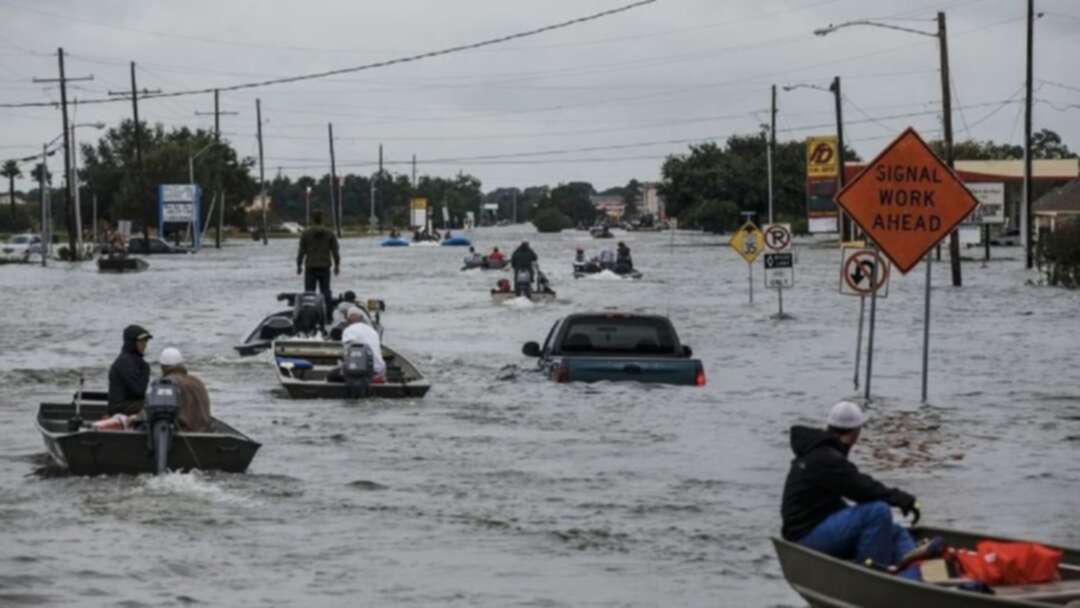-
Florida Gulf Coast braces for Hurricane Ian, millions urged to evacuate

Forecasters have warned that Hurricane Ian could strengthen to a Category 4 storm as it targets Florida. It was moving closer to Florida's west coast early Wednesday (Sep 28), according to the National Hurricane Center. The residents emptied grocery shelves, boarded up windows and fled to evacuation shelters.
The center of the storm is expected to pass over central Florida on Wednesday night and Thursday morning (Sep 29), and emerge over the western Atlantic by late Thursday, the hurricane center said.
A Category 4 storm on the five-step Saffir-Simpson scale carries steady winds of up to 130 miles per hour (209 kilometers per hour), according to Reuters.
The first hurricane advisory on Wednesday put Ian’s maximum sustained winds near 120 mph (195 kilometers per hour), ranking it a Category 3, but said the storm was expected to strengthen.
On Tuesday (Sep 27), Hurricane Ian tore into western Cuba as a major hurricane, knocking out power to the entire country and leaving 11 million people without electricity.
“The time to evacuate is now. Get on the road,” Florida’s director of emergency management, Kevin Guthrie, said during a news briefing on Tuesday evening, urging residents to heed evacuation warnings.
Governor Ron DeSantis warned late Tuesday night (Sep 27) that evacuation would become difficult for those who waited much longer to flee because increasing winds would soon force authorities to close highway bridges.
Study shows climate change makes Hurricane Harvey more destructive
“You need to get to higher ground, you need to get to structures that are safe,” DeSantis said, adding that widespread power outages would leave millions without electricity once the storm strikes.
US Federal Emergency Management Agency chief Deanne Criswell said she worried that too few Florida residents were taking the threat seriously.
“I do have concerns about complacency,” Criswell said on Tuesday. “We’re talking about impacts in a part of Florida that hasn’t seen a major direct impact in nearly 100 years. There’s also parts of Florida where there’s a lot of new residents.”
levantnews-agencies
You May Also Like
Popular Posts
Caricature
BENEFIT Sponsors BuildHer...
- April 23, 2025
BENEFIT, the Kingdom’s innovator and leading company in Fintech and electronic financial transactions service, has sponsored the BuildHer CityHack 2025 Hackathon, a two-day event spearheaded by the College of Engineering and Technology at the Royal University for Women (RUW).
Aimed at secondary school students, the event brought together a distinguished group of academic professionals and technology experts to mentor and inspire young participants.
More than 100 high school students from across the Kingdom of Bahrain took part in the hackathon, which featured an intensive programme of training workshops and hands-on sessions. These activities were tailored to enhance participants’ critical thinking, collaborative problem-solving, and team-building capabilities, while also encouraging the development of practical and sustainable solutions to contemporary challenges using modern technological tools.
BENEFIT’s Chief Executive Mr. Abdulwahed AlJanahi, commented: “Our support for this educational hackathon reflects our long-term strategic vision to nurture the talents of emerging national youth and empower the next generation of accomplished female leaders in technology. By fostering creativity and innovation, we aim to contribute meaningfully to Bahrain’s comprehensive development goals and align with the aspirations outlined in the Kingdom’s Vision 2030—an ambition in which BENEFIT plays a central role.”
Professor Riyadh Yousif Hamzah, President of the Royal University for Women, commented: “This initiative reflects our commitment to advancing women in STEM fields. We're cultivating a generation of creative, solution-driven female leaders who will drive national development. Our partnership with BENEFIT exemplifies the powerful synergy between academia and private sector in supporting educational innovation.”
Hanan Abdulla Hasan, Senior Manager, PR & Communication at BENEFIT, said: “We are honoured to collaborate with RUW in supporting this remarkable technology-focused event. It highlights our commitment to social responsibility, and our ongoing efforts to enhance the digital and innovation capabilities of young Bahraini women and foster their ability to harness technological tools in the service of a smarter, more sustainable future.”
For his part, Dr. Humam ElAgha, Acting Dean of the College of Engineering and Technology at the University, said: “BuildHer CityHack 2025 embodies our hands-on approach to education. By tackling real-world problems through creative thinking and sustainable solutions, we're preparing women to thrive in the knowledge economy – a cornerstone of the University's vision.”
opinion
Report
ads
Newsletter
Subscribe to our mailing list to get the new updates!






















